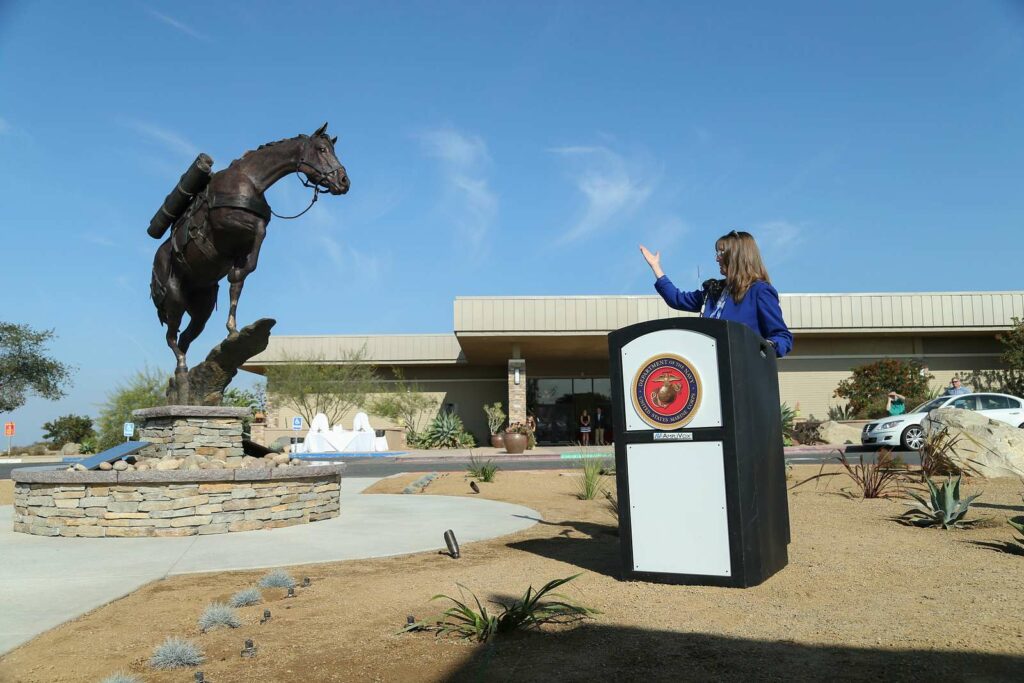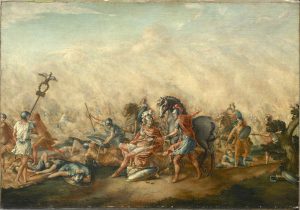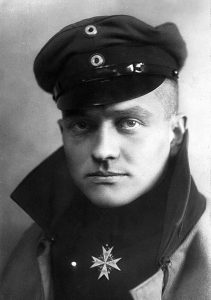“Keep moving. Complete the job. One foot after the other, Sergeant Reckless kept going.” Injured by flying debris, enough to bring down any less motivated soldier. A bomb goes off on the right. Then one on the left. Loud screams of American soldiers fill the atmosphere as they are hit by North Korean forces. This is the unbearable sight of the Korean War. Americans joined the war effort to fight the spread of communism, some to fight alongside a brotherhood, and some because they might have had nothing else better to do. But Sergeant Reckless was in the war by circumstance. She was a pack horse bought to deliver heavy ammunition more efficiently. She wanted to complete her job in the purest form a soldier could desire. She desired to please the men who trained her and whom she now understood as her herd.1
Born in Seoul, Korea, Sergeant Reckless was a beautiful young sorrel filly with three white socks. Her mother was a racehorse, and there was the expectation that she would become the same for her owner, Kim-Huk Moon, who originally gave the young filly the name Ah Chim Hai, which translates to “Flame in the Morning.” Kim-Huk was hoping to race the young filly after having success racing the filly’s mother. Unfortunately, Kim-Huk was subject to bad circumstances when his sister was struck by a landmine and lost her leg, resulting in Kim-Huk’s desire to purchase an artificial leg, which was considerably expensive at the time. In October 1952, Sergeant Reckless was purchased from Kim-Huk for $250 dollars in order to afford the artificial leg. Sergeant Reckless was purchased by Lieutenant Eric Pederson, commander of the U.S. Recoilless Rifle Platoon of the Fifth Marine Regiment.2
In the midst of the Korean War, the U.S. was struggling against guerilla warfare tactics and the effort to use new military technology to combat them. The U.S. Recoilless Rifle Platoon specialized in the Recoilless Rifle, which was a rifle made to combat tanks. The weight of the ammunition for this weapon was 24 pounds per shell and was longer than 16 inches. Watching his men go through the struggle of carrying these shells, Pederson realized that there had to be a more efficient way of transporting the valuable ammunition. He came up with the idea of buying a horse that could help carry the ammunition. This is how he came to meet Sergeant Reckless. He had no idea at the time what a hero she would become. 3

On arrival, the horse was given the name Sergeant Reckless after the recoilless rifle platoon she served. She would then spend the next few months being trained. Sergeant Joe Latham was put in charge of training the horse. He taught her everything she needed to know to serve in the Marines. He taught her how to load in and out of the trailer, how to avoid barbwire, and even how to crawl in case she ever needed it. It was an incredible sight to see. This amazing horse even learned to run to the bunker at the sound of an alarm if being attacked. She was incredibly smart, which made it easy for the Marines to fall in love with her. They would treat her just like any other marine. They let her eat about anything, from bread to chocolate. They even allowed her to sleep in the tents with them. John T. Meyers, a Marine Corps Sergeant, described the horse as, “she knew exactly where I slept and she’d come in the tent and lick my face to wake me up, so she could eat.”4 This relationship carried on alongside her training. Latham finally obtained a saddle from his wife back home, which would finally allow her training to deliver ammunition. She could carry about 6-10 long shells, whereas a regular marine could carry only 2-3 at a time. A part of the training involved teaching her routes and exposing her to the loud sound of gunfire. When they first fired the recoilless rifle in front of her, she quite literally jumped in the air and began shaking uncontrollably. After a couple more attempts, she was unfazed by the sound and even seemed to show signs of boredom as she tried to nibble objects around her.
From that day on, she carried ammunition to the marines that held the front line. She needed no guide. She would go through the route, as she was trained to do, and come back. Her efficiency was something the Marines could not have predicted from this horse. It seemed as though she wanted to be packed and unloaded quickly in order to complete another trip. She was so fast that the marines would need to take a break from how quickly they were firing to let the recoilless rifle cool down. This was an integral part of the success of this platoon.5
The day where she showed the world just how big of a hero she was came in March 1953, during the Battle of Vegas. This battle lasted more than two days. As the loud sounds of explosions sounded, you could see Sergeant Reckless running up steep hills with motivation. In one day, she took about 51 trips back and forth. She is predicted to have traveled a total of 35 miles that day.6 During this battle, she carried the wounded and dead back to the base camp. With her continuous supply of ammunition, she allowed for a steady and constant fire force from the marines. This allowed them to hold the line and prevent further loss of life.7
As she fearlessly traveled, she was hit twice by flying shrapnel. She was struck once on the top of her left eye and once on her left flank. She, however, never stopped or slowed down. She pushed through the pain to get her job done, which was crucial to the war effort. With her injuries, she became a motivator for the marines, who cared deeply for her. Robin L. Hutton said in his closing remarks at a dedication ceremony,
“I need to thank Reckless, for just being Reckless… Reckless, as you look down upon us here today, I hope you know how grateful we are for the comfort you have given us, the love of friendship you have led us to, and the journey you have taken us on. For me, personally, you have forever changed my life. There are no words to adequately express the emotions and gratitude that I feel. I’m sure everyone here feels the same. I love you.” [7. Robin L. Hutton, Sgt. Reckless : America’s War Horse (Washington, DC : Regnery Publishing, 2014), 299-300.]

A truce to end the war was signed on July 27, 1953. 8 She was officially given the rank of sergeant and a red silk blanket with a citation that said, “Reckless’ attention and devotion to duty make her well qualified for promotion to the rank of sergeant. Her absolute dependability while on missions under fire contributed materially to the success of many battles.” 9 She remained in Korea for about a year when an article about her story appeared in the Saturday Evening Post. It told of her heroism. After this day, the American public wanted her to be brought to the home she fought for. She arrived in America on November 10, 1954, after the Pacific Transport Lines offered to bring her for free. She was the guest of honor at the Marine’s 179th Birthday Banquet, where she was indoors and ate a piece of cake surrounded by her brothers in arms. She was the only horse to survive the Korean War and spent the rest of her life at Camp Pendleton, where she never had to carry anything again.10 She passed away at the age of nineteen, carrying the title of Staff Sergeant. She was honored with two Purple Hearts, the Good Conduct Medal, Presidential Unit Citation, the National Defense Service Medal, the Navy Unit Commendation, the United Nations Service Medal, the Korean Service Medal, and the Korean Presidential Unit Citation, along with a big statue of her in front of the Memorial Park of the Marine Corps Heritage Center.11

Sergeant Reckless’s acts allowed families to bury the remains of their lost soldiers and even allowed injured men to be saved. She fought and pushed through sound and pain in order to achieve her mission and help the soldiers hold their line. You can teach a horse to do a job, but you cannot teach a horse to do it with the type of heart she did it with. She was truly a part of a herd, a brotherhood. She was a marine. Truly a staff sergeant. She was a prey animal by nature and an untraditional hero by heart.
- Danielle Rossingh, “The Legend of Sergeant Reckless, America’s Greatest War Horse,” CNN Wire, May 15, 2018, https://www.cnn.com/2018/05/15/sport/sergeant-reckless-warhorse-spt/index.html. ↵
- Danielle Rossingh, “The Legend of Sergeant Reckless, America’s Greatest War Horse,” CNN Wire, May 15, 2018. ↵
- Haruki Wada, The Korean War: An International History, Asia/Pacific/Perspectives Series (Lanham, Maryland: Rowman & Littlefield, 2014), 82. ↵
- Corey Kilgannon, “A Veteran of the Korean War Recalls a Marine Corps Buddy, Staff Sgt. Reckless,” The New York Times, November 9, 2012. ↵
- “Sergeant Reckless an Honoured War Hero,” Glanbrook Gazette (Caledonia, Ontario), February 12, 2013. ↵
- “Sergeant Reckless an Honoured War Hero,” Glanbrook Gazette (Caledonia, Ontario), February 12, 2013. ↵
- “War Horse Hero ‘SERGEANT RECKLESS’ AWARDED MEDAL FOR BRAVERY IN KOREA,” The London Evening Standard (London, England), July 27, 2016. ↵
- Michael Hickey, The Korean War: The West Confronts Communism (Woodstock, N.Y: Overlook Press, 2000), 334-335. ↵
- Stephanie A. Logue, “Sergeant Reckless of the Recoilless Rifles,” Cricket (Cricket Media, July 1, 2014): 40. ↵
- “Real War Horse Honored in Quantico,” The Washington Post, accessed January 23, 2023. ↵
- Edited Press Release, “Staff Sgt. Reckless Honored at Marine Corps Museum,” The Horse, July 27, 2013. ↵



2 comments
Andrew Ponce
Hey Chris! Firstly, the writing techniques of this article are incredible and very effective. This article begins with a quote to draw the reader in. Once the reader is drawn, there is never an opportunity for the reader’s mind to drift. The history provided on this historical horse is not only interesting, but distracting from the stresses of violence that surrounds readers. The story itself tells the life of an influential horse that impacted the sport so heavily. Great topic choice and great article!
Gaitan Martinez
I just would like to say when I first started to read the article, I thought sergeant reckless was going to be a cool, funny nickname for a soldier, but no. She’s a horse! This has to be one of my favorite articles that ‘ve read, very wholesome. I was really hoping she didn’t die in the war, but she didn’t! I’m glad to hear she was an amazing soldier, and got to live a good life. It did suck that she got injured, but at least she survived.